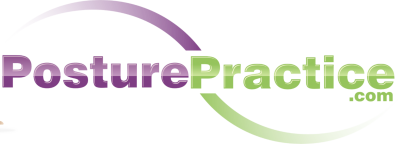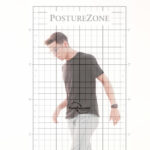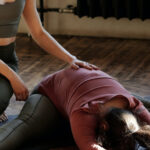Watch the Sway: An Indicator of Strengthening Posture
Your posture is what you’re doing every standing second to balance your body. And balance is a synthetic sense, constantly being calculated from visual, vestibular and proprioceptive input. What we see, how the head is moving, and joint stress information are being fed into our brain’s computer to figure our where we are in space, and what we need to do to stay vertical.
The doctors and therapists we teach observe posture by benchmarking the alignment of head over feet, torso over feet and pelvis over feet (the PostureZone® model), and then track improvement with their passive therapy (SMT, MT, etc) and StrongPosture® exercise. Our therapeutic goal is reducing (or correcting) sensori-motor errors towards improving the person’s accurate perception of the center of mass of head-torso-pelvis-feet.
Recent studies show postural sway is another way to benchmark balance and demonstrate improved strength. Postural sway is the slow motion of the body over the feet as someone is standing still (think Romberg’s test). In “Posturo-respiratory synchronization: Effects of aging and stroke,” researchers show there is linkage between breathing and sway, and that damage to the brain causes an increase in the synchronization of breathing and A-P (front to back) sway when the eyes are closed1.
Dr. Weiniger’s Take: When there’s a problem, we instinctively increase AP sway by recruiting motion of diaphragm and breathing to stimulate mechanoreceptors and increase the signal from the joints.
Can correcting motion problems help? Yes, another recent study, “The effect of tai chi on postturo-respiratory synchronization in frail older adults” concluded:
“Tai Chi training reduced the impact of closing the eyes on the strength of posturo-respiratory synchronization when standing. Tai Chi may therefore reduce the role of vision in the control of multi-system interaction.”2
Dr. Weiniger’s Take: Controlled-motion exercise such as Tai-Chi (or StrongPosture® protocols) trains accuracy and control of symmetric motion. Muscle and joint motion AND proprioception is therefore being trained towards being correct-to-reality, reducing error between perception and objective function. And reducing the need to increase respiratory motion to turn up the proprioceptive signal for balance to function and keep someone standing.
RESEARCHERS: Please contact me if you’re interested in a study to identify the effect of progressive attentional-focus StrongPosture® rehab protocols on the respiratory and postural control systems. Demographic of particular interest: Fall prevention. drweiniger _at_ bodyzone com
1 Manor, B. D., Hu, K., Peng, C. K., Lipsitz, L. A., & Novak, V. (2012). Posturo-respiratory synchronization: Effects of aging and stroke. Gait & Posture, 36(2), 254-9. doi:10.1016/j.gaitpost.2012.03.002. Retrieved from http://www.ncbi.nlm.nih.gov/pubmed/22475726
2 Holmes, M., Manor, B., Lipsitz, L. A., & Li, L. (2013). The Effect of Tai Chi on Postturo-Respiratory Synchronization in Frail Older Adults. Retrieved from Google Scholar.





















